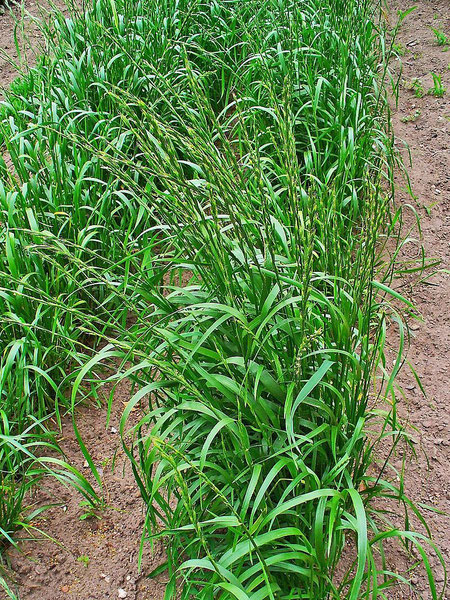Lolium temulentum
 Image: H. Zell
Image: H. Zell
Description
The plant stem can grow up to one meter tall, with inflorescence in the ears and purple grain. It has a global distribution.Darnel usually grows in the same production zones as wheat and was a serious weed of cultivation until modern sorting machinery enabled darnel seeds to be separated efficiently from seed wheat. The similarity between these two plants is so great that in some regions, darnel is referred to as "false wheat". It bears a close resemblance to wheat until the ear appears. The spikes of L. temulentum are more slender than those of wheat. The spikelets are oriented edgeways to the rachis and have only a single glume, while those of wheat are oriented with the flat side to the rachis and have two glumes. The wheat will also appear brown when ripe, whereas the darnel is black.
Propagation instructions - seeds
When the plant first emerges after the first few rains do an initial removal of this plant by holding it at the base and removing the root ball, or by inserting a weed tool at the base and popping up the root ball. If you missed any, do a follow up removal if necessary after a few weeks.
Do a second session targeting annual grasses after the last rains in late October or November to ensure no additional grasses that come up go to seed.
(https://www.cabi.org/isc/datasheet/31169)
